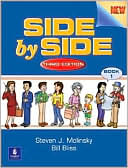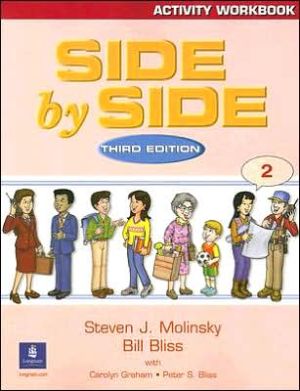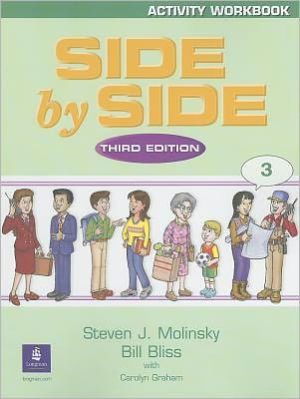English Intonation: An Introduction
Intonation - the rise and fall of pitch in our voices - plays a crucial role in how we express meaning. This accessible introduction shows students how to recognize and reproduce the intonation patterns of English, providing clear explanations of what they mean and how they are used. It looks in particular at three key functions of intonation - to express our attitude, to structure our messages to one another, and to focus attention on particular parts of what we are saying. An invaluable...
Search in google:
An introduction to intonation - the expression of meaning through rise and fall of pitch in our voices - in English.
English IntonationCambridge University Press978-0-521-86524-1 - English Intonation - An introduction - by J. C. WellsExcerpt1 Introduction1.1 What is intonation?Intonation is the melody of speech. In studying intonation we study how the pitch of the voice rises and falls, and how speakers use this pitch variation to convey linguistic and pragmatic meaning. It also involves the study of the rhythm of speech, and (in English, at any rate) the study of how the interplay of accented, stressed and unstressed syllables functions as a framework onto which the intonation patterns are attached. If we had no intonation, our speech would be – in the literal sense of the word – monotonous. Either it would all remain on one pitch throughout, or every utterance would employ exactly the same stereotyped tune at all times. But speakers do neither of those things: they make the pitch of their voice rise, fall, jump and swoop, in all sorts of different ways. Even the most boring speaker has access to a considerable repertoire of tunes (intonation patterns) – though maybe some speakers are better than others at exploiting this. Lively speakers typically make good use of the wide repertoire of possible intonation patterns that English offers. This is true both for the broadcaster, lecturer, preacher, politician, or businessman addressing a public audience and for the participant in an ordinary everyday conversational interchangeor informal chat. The purpose of this book is to show how intonation works in English, and to describe a selection of the intonation patterns of English from the point of view of English language teaching (ELT). The emphasis is on points that should be useful for those teaching or learning English as a non-native language. At the same time it will, I hope, enable native speakers of English to appreciate the functioning of English intonation. Why is the study of English intonation useful for the student of English? The linguistic study of any language is of course academically valuable in itself. But for the learner of English there is also a very practical reason for making some attempt to acquire a command, both active and passive, of its intonation. If they study pronunciation at all, learners of English usually concentrate on the segmental phonetics – the ‘sounds’ of the language (known technically as the segments). It is indeed important to learn to recognize and reproduce the consonant sounds and vowel sounds of English and the differences between them. Every learner of English should be taught to make the th-sounds of thick and this, the vowel sound of nurse, and the differences in sound between leave and live, bet and bat. Most learners also learn about word stress. They know that happy is stressed on the first syllable, but regret on the second. But intonation (also known as prosody or suprasegmentals) is mostly neglected. The teacher fails to teach it, and the learner fails to learn it. Like other elements of language, some gifted learners will pick it up more or less unconsciously; but many will not. The problem is this: native speakers of English know that learners have difficulty with vowels and consonants. When interacting with someone who is not a native speaker of English, they make allowances for segmental errors, but they do not make allowances for errors of intonation. This is probably because they do not realize that intonation can be erroneous. After all, almost any intonation pattern is possible in English; but different intonation patterns have different meanings. The difficulty is that the pattern the learner uses may not have the meaning he or she intends. Speakers of English assume that – when it comes to intonation – you mean what you say. This may not be the same as what you think you are saying. Audio recordings of selected examples from the text and exercises are provided on the accompanying CD. The icon □ tells you which they are. The intonation symbols used in this book are explained in appendix A1.EXERCISESE1.1.1 Listen to the following sentences spoken (i) normally and (ii) strictly on a monotone (= the pitch of the voice stays level, not going up and not going down). Repeat them aloud in the same way.□ I ˈcan’t \\stand it.□ ˈWhat do I do \\now?□ O /Lord, ∣ ˈopen thou our \\lips!□ Are you ˈready to /answer?□ ˈSilly old \\fool!What do these sound like when spoken on a monotone? Would they ever be said like this in real life? (Singing? Chanted in a church service? In conversation, with some special meaning?)E1.1.2 Pitch awareness exercise. □ Listen to the syllable ma said with high pitch (¯ma) and then with low pitch (_ma). Imitate. Learn to produce high (H) or low (L) pitch at will.¯ma¯ma¯ma_ma_ma_maHHHLLL _ma¯ma¯ma_ma_ma¯maLHHLLHE1.1.3 Repeat E1.1.2, but with English words.¯mine_ mine_ mine¯mine¯mineHLLHH_yours¯yours¯yours_yours_yoursLHHLL1.2 Prosodic featuresThe prosodic (or suprasegmental) characteristics of speech are those of pitch, loudness and speed (or tempo, or speech rate; its inverse is the duration of the constituent segments). These combine together to make up the rhythm of speech, and are combined in turn with stretches of silence (pause) to break up the flow of speech. To some extent prosodic characteristics are the same in all languages. It is probably true of all human societies that speakers speed up when they are excited or impatient and slow down when they are being thoughtful or weighty. We all speak more quietly than normal when we do not wish to be overheard. We all have to speak more loudly to be heard over a distance or in noisy conditions (unless, of course, we can use modern technology to transmit and amplify the signal for us). But it is clear that different languages also regularly differ in their prosodic characteristics. Simply transferring the prosodic patterns of one’s mother tongue or L1 to a foreign language or L2 (such as English) contributes to making you sound foreign, and may quite possibly lead to your being misunderstood by other speakers. Stress is realized by a combination of loudness, pitch and duration. Some languages use stress placement lexically (= to distinguish between different words in the dictionary). For example, the Greek words πóλι [ˈpoli] and πολú [poˈli] differ in meaning. The first means ‘city’, the second means ‘much, very’. The difference of meaning depends entirely upon the location of the stress, and involves no difference in the consonant and vowel sounds. Other languages do not use stress lexically: in French there are no pairs of words of different meaning distinguished by stress placement. In English there are a few pairs of words distinguished just by stress, for example ˈbillow and beˈlow or ˈimport (noun) and imˈport (verb). However, the English habit of weakening unstressed vowels means that most pairs of words differing in stress often also have differences in their vowel sounds, so that the distinction is not carried by stress alone. Nevertheless, English is, like Greek, a stress language: stress is an important part of the spoken identity of an English word. A complicating factor is that differences of stress in English are largely signalled by pitch movements, as discussed in chapters 2 and 5 below. Tone is another prosodic characteristic, being realized mainly by differences in the pitch of the voice (e.g. high level, mid level, low level, rising or falling). A high pitch results from the relatively rapid vibration of the vocal folds in the larynx, a low pitch from a relatively slow vibration. An acceleration in the rate of vibration is heard as a rising pitch, a slowing down as a falling pitch. In a level pitch the vocal folds vibrate at a constant rate. Some languages use tone lexically. For example, in Thai the syllable [khaː] has different meanings depending on the tone with which it is said. With tone 1 (a mid level tone) it means ‘to be stuck’. With tone 2 (low level) it is the name of a plant, ‘galingale’. With tone 3 (falling) it means ‘value’, with tone 4 (high level) ‘to trade’, and with tone 5 (rising) ‘leg’. In Mandarin Chinese, [ma] with tone 1 (high) means ‘mother’, with tone 2 (rising) ‘hemp’, with tone 3 (low fall–rise) ‘horse’, and with tone 4 (falling) ‘to scold’. In Zulu, [iˈɲaŋga] inyanga with high tones on the first and last syllables means ‘moon, month’, but with high tone only on the first syllable means ‘traditional practitioner, herbalist’. Some languages have tonal differences, but only on stressed syllables. In Norwegian, [ˈbønɘr] has two possible meanings. With one tone on the stressed syllable it means ‘peasants’ (bønder), but with another, ‘beans’ (bønner). Tokyo Japanese makes lexical use of what is known as pitch accent, which is manifested as a sudden drop in pitch immediately after the place in the word where the accent (if any) is located. The segmental string [ha□i] hashi with no accent means ‘end, edge’. With an accent on the first syllable it means ‘chopsticks’, and with an accent on the second syllable it means ‘bridge’. For ‘chopsticks’ the second syllable is much lower pitched than the first, but the difference between ‘bridge’ and ‘end, edge’ is manifested in the pitch of the syllable at the beginning of the following particle, e.g. in the [ga] of hashi-ga, which is low pitched for ‘bridge’ but not for ‘end, edge’.EXERCISESE1.2.1 Practise making and hearing sequences of high and low level tones.¯ma_ma_ma¯ma_ma¯ma_ma¯ma_ma¯ma¯ma¯ma_maH LL HL H HH L LH H L_one¯two¯one¯two_one_two_one¯two¯one¯one_two¯oneL HH HL LL H HH L HE1.2.2 Practise hearing and produce falling and rising tones, in which there is a change of pitch on a single syllable.□\\ma/ma\\ma\\ma/ma/ma\\ma/ma/ma\\maHLLHHL HLLH LHHL LHLH HL□\\mine/mine/mine \\mine/un\\known\\un/knownHLLHLH HLLH HLHL LH1.3 Is English a tone language?English has nothing like these prosodic characteristics of Thai, Mandarin, Zulu, Norwegian or Japanese. English does not use tone lexically: in this sense, it is not a tone language. But English does use tone for intonation. We can say any English word with any of the intonational ‘tones’ identified in this book, but the choice of tone does not alter the lexical identity of the word. Whichever we say of□ \\chair□ /chair□ vchair– the lexical meaning (= the meaning as shown in a dictionary) is still the same. The non-lexical meaning is different, as discussed in chapter 2, where we see that a fall may indicate definiteness, a rise may indicate incompleteness, and a fall–rise may indicate implications. But these intonational meanings apply equally to any other word:□ \\monkey□ /monkey□ vmonkeyor, more usually, to a clause, sentence, or sentence fragment. Thus English makes use of tone intonationally, but not lexically. In fact the intonation system of English constitutes the most important and complex part of English prosody. By combining different pitch levels (= unchanging pitch heights) and contours (= sequences of levels, changing pitch shapes) we express a range of intonational meanings: breaking the utterance into chunks, perhaps distinguishing between clause types (such as statement vs. question), focusing on some parts of the utterance and not on others, indicating which part of our message is background information and which is foreground, signalling our attitude to what we are saying. Some of this intonational meaning is shown in writing, through the use of punctuation, but most of it is not. This is why spoken English, as spoken by native speakers, is richer in information content than written English. This is also why some non-native speakers, not being attuned to English intonation and what it means, may fail to catch a substantial part of the overall meaning of something spoken by a native speaker. We complain, ‘It’s not what you said, it’s the way that you said it’, meaning that your words when written down appear innocuous – yet when spoken aloud they were offensive or insensitive. The same words in the same grammatical constructions may have different pragmatic effects. This is because they may differ in intonation, and perhaps also in other, paralinguistic, features (e.g. huskiness, breathiness, whisper, nasality, special voice qualities). Like other prosodic characteristics, intonation is partly universal (= the same in all languages), but also partly language-specific (= differing from one language to another). Languages differ in the intonation patterns they use, and in the extent to which they rely on intonation to convey aspects of meaning. More importantly, the same physical pattern of rises and falls may have different meanings – different pragmatic implications – in different languages. A low-rise tone pattern may signal a simple statement in Danish or Norwegian. But in most kinds of English it has implications of non-finality, or perhaps uncertainty or truculence. An accent on a pronoun (a high tone, say) may have a neutral meaning in many African languages, and indeed in French or some other European languages; but in English it highlights the pronoun, perhaps suggesting a contrast between its referent and some other person involved. Between speakers of different languages, intonation patterns can be much more easily misunderstood than segmental patterns.EXERCISESE1.3.1 Practise making and hearing mixtures of level and moving tones on sequences of monosyllables.□¯ma\\ma\\ma_ma\\ma¯ma/ma¯ma/ma_ma¯ma/maH HLHL LHL HLH HLH LH LH_no/no¯no\\no\\no_no/no¯no¯no/no_no\\noL LHH HLHL LLH HH LHL HL1.4 The three Ts: a quick overview of English intonationAs concerns intonation, speakers of English repeatedly face three types of decision as they speak. They are: how to break the material up into chunks, what is to be accented, and what tones are to be used. These linguistic intonation systems are known respectively as tonality, tonicity and tone. We refer to them as the three Ts. Tonality. The first matter a speaker has to decide is the division of the spoken material into chunks. There will be an intonation pattern associated with each chunk. These chunks are known as intonation phrases or IPs. Each IP in an utterance has its own intonation pattern (or ‘tune’). (Various authors use various other names for the IP, including ‘word group’, ‘tone group’ and ‘intonation group’.) In general, we make each clause into a separate IP. (The symbols ∣ and ‖ represent the boundaries between IPs.)Because I love languages ∣ I’m studying intonation. ‖When I’ve finished this book, ∣ I’ll know a lot more about it. However, the speaker does not inevitably have to follow the rule of an IP for each clause. There are many cases where different kinds of chunking are possible. For example, if a speaker wants to say We don’t know who she is, it is possible to say the whole utterance as a single IP (= one intonation pattern):□ We don’t know who she is.But it is also possible to divide the material up, in at least the following possible ways:□ We don’t know ∣ who she is.□ We ∣ don’t know who she is.□ We don’t ∣ know who she is.□ We ∣ don’t know ∣ who she is.Thus the speaker may present the material as two, or three, pieces of information rather than as a single piece. This is tonality (or chunking), and is the topic of chapter 4. Tonicity. Speakers use intonation to highlight some words as important for the meaning they wish to convey. These are the words on which the speaker focuses the hearer’s attention. To highlight an important word we accent it. More precisely, we accent its stressed syllable (or one or both of its stressed syllables, if it has more than one). That is to say, we add pitch prominence (= a change in pitch, or the beginning of a pitch movement) to the rhythmic prominence that a stressed syllable bears. The accents that result are also the ‘hooks’ on which the intonation pattern is hung. Which words are to have attention drawn to them by being accented? And which are not to be focused on in this way? In particular, where is the speaker to locate the last accent (the nucleus) within the intonation phrase? The nucleus is the most important accent in the IP. It indicates the end of the focused part of the material. In terms of pitch, it is marked out by being the place where the pitch change or pitch movement for the nuclear tone begins.Image not available in HTML versionImage not available in HTML versionIn this example the nucleus is the syllable -dic-. It does not matter what nuclear tone is used: the point is that the tone movement begins on this syllable. In this way both the syllable -dic- and the word ridiculous are accented. (Some authors call it the ‘tonic’ rather than the nucleus. Other names are ‘intonation centre’ and ‘sentence accent’ or even ‘sentence stress’.) The nucleus is usually placed at the end of the IP unless there are special reasons for it to go somewhere else. At this point we need to consider the anatomy of the IP as a whole. The part of the IP that follows the nucleus is called the tail. By definition, the tail contains no accented syllables. If the nucleus is located on the last syllable in an IP, there is no tail:Image not available in HTML versionImage not available in HTML versionIf an IP contains an accent in the part before the nucleus, the first (or only) such accent is called the onset. The part extending from the onset to the last syllable before the nucleus is called the head:Image not available in HTML versionImage not available in HTML versionIn this example the onset is the syllable -mark-. There is a pitch change there, making the syllable stand out. In this way the syllable, and therefore the word remarkably, are accented. The syllables -markably constitute the head. The part before the onset is called the prehead. By definition, the prehead contains no accented syllables. In the example the prehead is It was re-. If an IP contains no accented syllables before the nucleus, there is no head. If it contains no unaccented syllables before the first accent (onset or nucleus), there is no prehead. The boundaries of prehead, head, nucleus and tail do not necessarily coincide with word boundaries, although they always coincide with syllable boundaries. Although every IP contains a nucleus, not all IPs contain a prehead, a head or a tail. For most utterances, the speaker can select from a wide range of possible intonation patterns. Depending on the circumstances and the meaning, the nucleus can be put in various places. For example, the statement We’re planning to fly to Italy could be said as:Image not available in HTML versionHere, the nucleus is It- and the tail is -aly. The onset is plan-, and the head is planning to fly to. The prehead is We’re. However, the same statement could also be said in any of the following ways, depending on the circumstances under which it is uttered. (The underlining shows the location of the nucleus. The mark ˈ shows the accented syllables.)□ We’re ˈplanning to ˈfly to Italy.□ We’re ˈplanning to fly to Italy.□ ˈWe’re planning to fly to Italy. The question of tonicity (or nucleus placement) is the topic of chapter 3. Tone. Having decided the tonicity – that is, having selected a suitable location for the nucleus – what kind of pitch movement (what tone) is the speaker going to associate with it? For example, a speaker wanting to say You mustn’t worry can choose between several possible tones:Image not available in HTML version The basic choice between fall, rise and fall–rise is discussed in chapter 2. In general, a fall tends to indicate that the information conveyed is, or could be, complete, whereas a rise or fall–rise tends to indicate that there is something more to come (either from the same speaker, or from a different speaker). The default tone (= the tone used if there are no special circumstances) for statements, exclamations, commands and wh questions is a fall, but for yes–no questions it is a rise. A fall–rise often signals particular implications. We also have to make decisions about which words (if any) in addition to the nucleus are to be accented. There may be different kinds of prenuclear pitch pattern. There are also tone choices involving more subtle distinctions than a simple fall vs. rise vs. fall–rise. For example, a fall can be a high fall, a low fall or a rise–fall. These further choices are discussed in chapter 5. Although logically the speaker first has to decide the tonality, then the tonicity, and last of all the tone, it is convenient for our discussion to treat the three Ts in reverse order, namely: tone (chapter 2), then tonicity (chapter 3), then tonality (chapter 4). After that we deal with the less crucial choices in chapter 5, and bring everything together in chapter 6.EXERCISESE1.4.1 Say whether the following pairs differ in tonality, tonicity or tone.1(i)So! ∣ You want to kill me!(ii)So you want to kill me!2(i)I’m ˈangry about his beˈhaviour.(ii)I’m ˈangry about his behaviour.3(i)She \\wants to be invited.(ii)She /wants to be invited?4(i)ˈSome of us ∣ are ˈvery ˈpleased.(ii)ˈSome of ˈus ∣ are ˈvery pleased.5(i)I \\don’t think ∣ it’s \\fair.(ii)I don’t think ∣ it’s \\fair.E1.4.2 For each of the following, identify the nucleus and (if present) the onset, prehead, head and tail. Tone is not relevant.ˈNever!Aˈmazing!ˈThirty-ˈfive.I ˈdon’t beˈlieve it.Is ˈthat what you think?I ˈjust don’t aˈgree with you.We’ve had a ˈwonderful holiday.There’s aˈnother train ˈcoming.ˈWhen will you deˈcide?It’s imˈpossible.© Cambridge University Press
1. Introduction; 2. Tone: going up and going down; 3. Tonicity: where does the nucleus go?; 4. Tonality: chunking, or division into IPs; 5. Beyond the three Ts; 6. Putting it all together.








